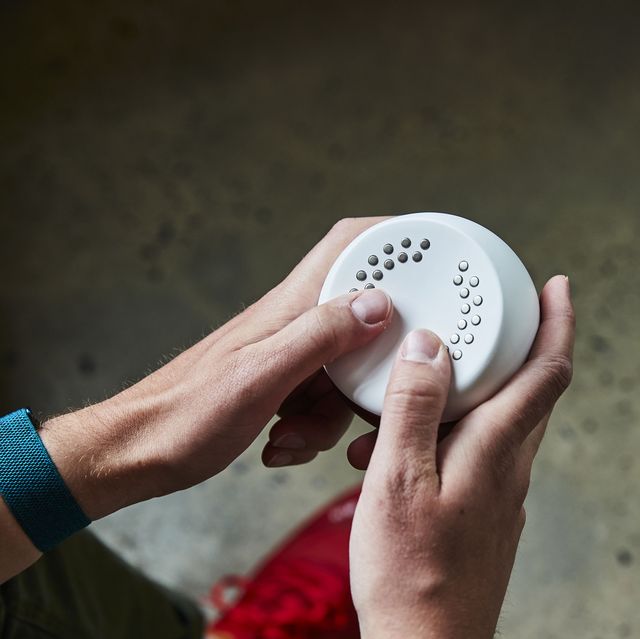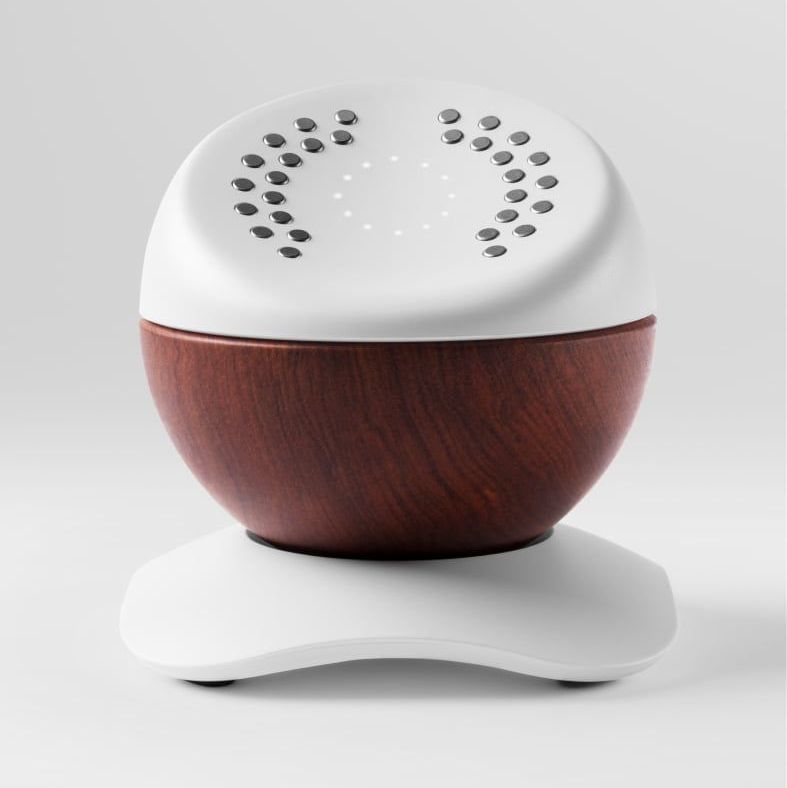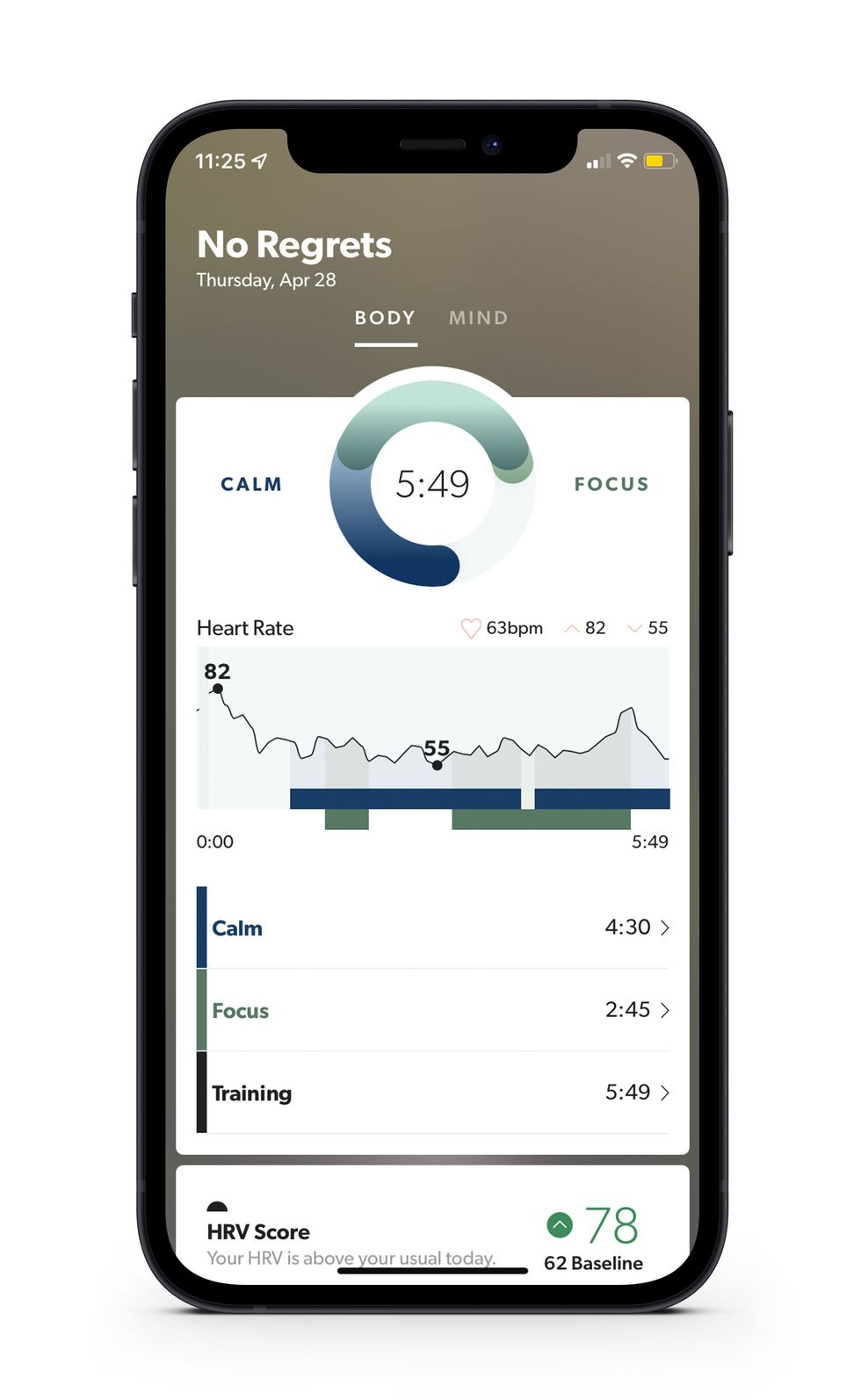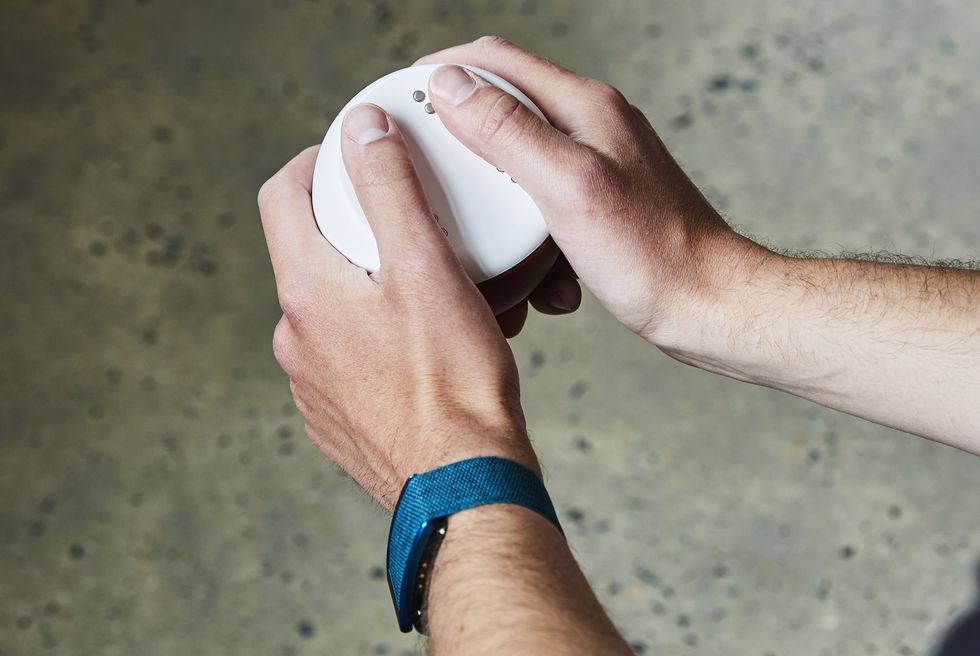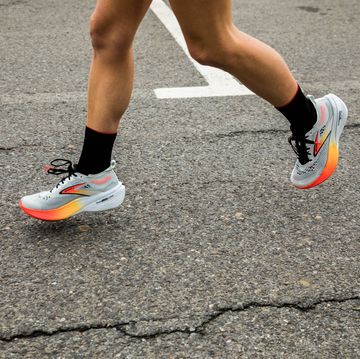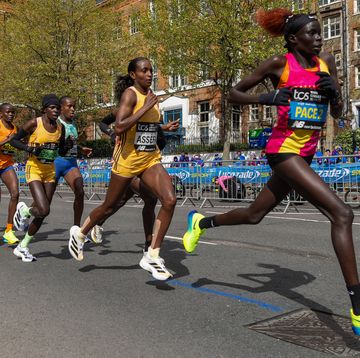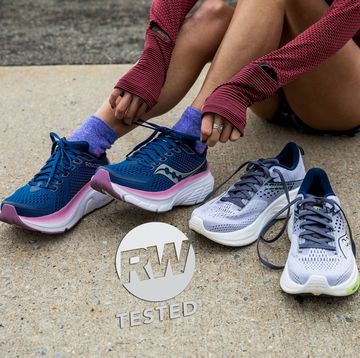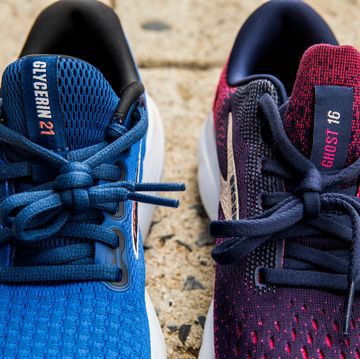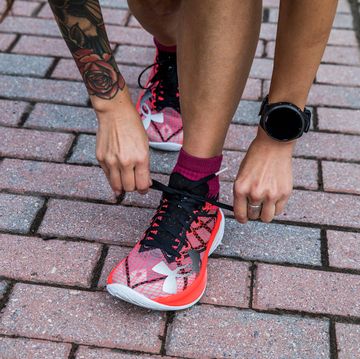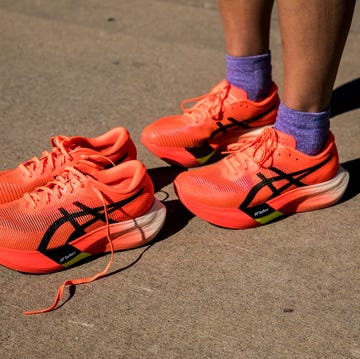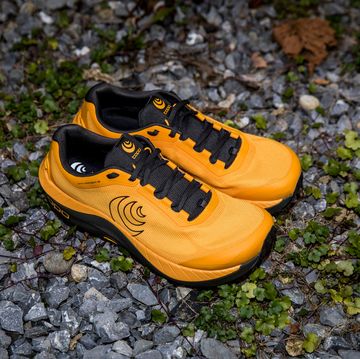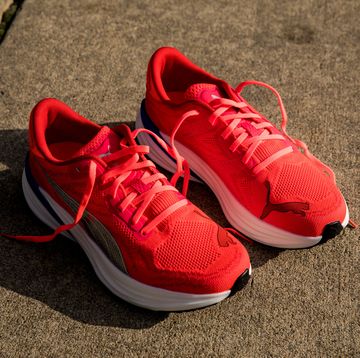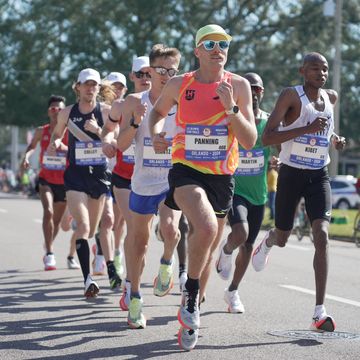It’s been three years since I tried meditating for a month, wrote a story on what I learned, and promptly reverted back to my meditation-free routine. Committing to anything, even stillness, well, it ain’t easy. Especially when you’re the kind of person who groans on group runs, “But guys, my stomach turns if we go any slower.”
Resigning myself as the type of person who can’t take five minutes of her day to just stop and breathe, I somehow found myself raising my hand (again) when Runner-in-Chief and deputy editor Jeff Dengate asked if anyone on the team wanted to test out Hyperice’s new meditation device.
Core is an orb you hold in your hands, connected to an app on your phone for meditation sessions and data collection about your progress. The device, weighing about half a pound, is TSA-approved, and comes with a charging base and USB cable. Core alone is $179, with the premium 12-month app content costing $70 a year; bundled together the price is $219.
Hyperice acquired Core last summer, extending Hyperice’s recovery offerings from muscle to mental. It makes sense the brand known for its vibrating massage tools—Hypervolt massage gun and Hypersphere vibration ball—plus Normatec boots, the inflatable leg sleeves, would add a mental recovery device that uses vibration for focus and breathing techniques.
How to Use
During a session, you rest your thumbs on Core’s sensors. This tracks your heart rate variability and average heart rate. Data-driven runners will appreciate how the app records your total sessions, time spent meditating, and techniques you’ve practiced (my two-week list includes body scan, gratitude, and setting intentions). Also measured are what Core categorizes as Calm, Focus, and Training, which graphically illustrates your progress, outlining the time you are in each state. The app provides an explanation for each:
- Calm: This state is when your parasympathetic system—the system that is responsible for the body’s “rest-and-digest” response—is dominant. The device measures your heart rate and HRV to see how active your parasympathetic system is at reducing stress after a couple meditation sessions.
- Focus: In this state, Core looks for a sinusoidal pattern in your heart rhythm. This is when your breathing and heart beat are in sync (a.k.a. Respiratory Sinus Arrhythmia). In this state, you can improve concentration and reduce anxiety, thus improving your athletic performance.
- Training: Training is measured by the beat-to-beat difference in your pulse. A higher HRV is achieved by having greater variability in your heart rate. Meditating regularly trains your parasympathetic system nervous system to respond faster to managing stress.
Athletes can use this data to keep tabs on their heart rate and day-to-day stress levels. The idea is to train your mind and body on how to handle stress, becoming more resilient during competition—and outside of it.
The Trial
I committed to meditating for two weeks this time, keeping Core on my nightstand, which looks part-modern sculpture, part-Black Mirror tech-of-tomorrow next to my ever-growing pile of books yet to be read (I’m game for a meditation device, but I’ll resist a Kindle for as long as I can).
Core has you begin with four basic sessions, which are five to eight minutes long. For most sessions, I would sit on my floor midday, back resting against my bed, eyes closed, the device gently vibrating as I held it in both my hands. I discovered meditation was more attainable with something tangible in my hands.
Without the annual subscription, the app gives you a two-week trial to explore Core Studio sessions with specific trainers.
I found I liked the Guided category the most. Its sections include People & Relationships, Your Purpose, and Sleep. A soothing voice instructs you when to breathe while also gently prompting you to mull over whatever subject you choose. I became familiar with the device, sinking into its inhale and exhale vibration prompts. Sleep sessions had me on the precipice of falling under before they were over; I’d have to extricate my limbs from my sides to turn off the app and my nightstand lamp with minutes leftover. During “No Regrets,” a session under Your Purpose, I followed disembodied words that told me to remember times of regret or weakness, eventually coming back to stillness by focusing on the vibrations and my breathing.
These sessions surprised me because, boy, I went there. I dredged up painful memories as well as joyful ones to counter that pain. It made me wonder how busy I was making myself throughout the day, attempting to suppress feelings to keep control.
Some sessions, however, sounded more narrative than meditation practice. The athlete ones in Core Studio, for example, were basically short life stories. I understood the context—learning how these professionals used meditation to channel competition anxiety—but I preferred instruction over anecdotes (I’m afraid to hear what that says about me as a person).
One more thing to note: the battery drains fast. The site says the device has a two-week battery life but over the span of my trial (two weeks) I had to recharge it every three days. The top of the orb does a little light show when it properly rests on its charging dock.
The Verdict
I feel weird comparing this to Jedi mind-training (in brief, very unfocused moments, I’d sing “I’ve got the whole Death Star in my hands”) but I do believe these sessions will help me during racing, especially during the tedium of longer runs where the mind wanders.
After the two-week trial, I’ll admit I stopped picking up Core. Another set of stats to follow is too much for my data-clogged mind. And so I revisited another practice I thought I was too impatient, too antsy, too scattered for: yoga. It took me forever to roll out that mat. However, this past month I’ve gone weekly, challenging myself through poses at a local studio, and ultimately ending each session with a few minutes of meditation. I learned I needed to keep my body engaged to achieve calm, focus, and training.
Amanda is a test editor at Runner’s World who has run the Boston Marathon every year since 2013; she's a former professional baker with a master’s in gastronomy and she carb-loads on snickerdoodles.
